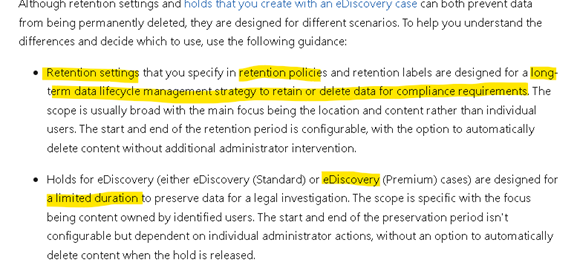These truly are two different functions.
1) Retention policies are meant for setting how long data in an Office 365 tenant should be held for, and what should happen after this period is up (delete, archive, etc).
2) Litigation hold trumps retention policies as it is meant for investigatory/hold reasons. A litigation hold can manually be placed on a user's mailbox so that nothing is deleted by anyone or any automated process (such as a retention policy).
A good explanation between the two can be found at https://www.nucleustechnologies.com/blog/microsoft-365-litigation-hold-vs-retention-policy/#:~:text=Litigation%20Hold%20can%20be%20applied,take%20priority%20over%20data%20again.
Microsoft support was not wrong by saying to use a litigation hold to retain info for an extended period of time (of course this is true if you have retention policies in place that may delete data after a certain period of time).
Documentation for Create and configure retention policies
Documentation for Create a Litigation hold
When you place a user mailbox on Litigation hold, content in the user's archive mailbox (if it's enabled) is also retained. When you create a hold, you can specify a hold duration (also called a time-based hold) so that deleted and modified items are retained for a specified period and then permanently deleted from the mailbox. Or you can just retain content indefinitely (called an infinite hold) or until the Litigation hold is removed.
Hope this helps you understand better.
If this is helpful please mark as correct answer.







